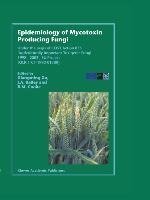
-
 Anglický jazyk
Anglický jazyk
Epidemiology of Mycotoxin Producing Fungi
Autor: Xiangming Xu
Mycotoxins continue to be a very serious threat to human health and a major concern for those entrusted with regulatingthesafetyoffoodandfoodproducts.Infectionofcerealsandothercrops,notablegrapevine,byFusarium, Aspergillus andPenicillium are a world-wide... Viac o knihe
Na objednávku
98.99 €
bežná cena: 109.99 €
O knihe
Mycotoxins continue to be a very serious threat to human health and a major concern for those entrusted with regulatingthesafetyoffoodandfoodproducts.Infectionofcerealsandothercrops,notablegrapevine,byFusarium, Aspergillus andPenicillium are a world-wide problem and recent epidemics in Europe, the USA and Canada have focused attention on this problem. A previous Special Issue of the European Journal of Plant Pathology (108 (7) 2003) was concerned with the nature of these toxins and the fungi that can produce them. The aim of this publication is to review the environmental factors that in?uence the success of these fungi as pathogens and as organisms affecting stored products, and to discuss how these factors can also in?uence the amounts of toxin that accumulate. These reviews were originally presented at a Workshop of the EU COST Action 835 entitled 'Agriculturally Important Toxigenic Fungi' (Chairperson Antonio Logrieco, Bari, Italy), held in East Malling, UK at the Horticultural Research International in September 2002. We hope the information provided will stimulate scientists world-wide to assess the risk of toxins accumulating in plants under a range of environmental conditions and that this will provide an insight into how the accumulation of these toxins can be kept to a minimum. XiangmingXu JohnBailey MichaelCooke EuropeanJournalofPlantPathology109: 645-667, 2003. © 2003KluwerAcademicPublishers.
- Vydavateľstvo: Springer Netherlands
- Rok vydania: 2010
- Formát: Paperback
- Rozmer: 297 x 210 mm
- Jazyk: Anglický jazyk
- ISBN: 9789048163878












